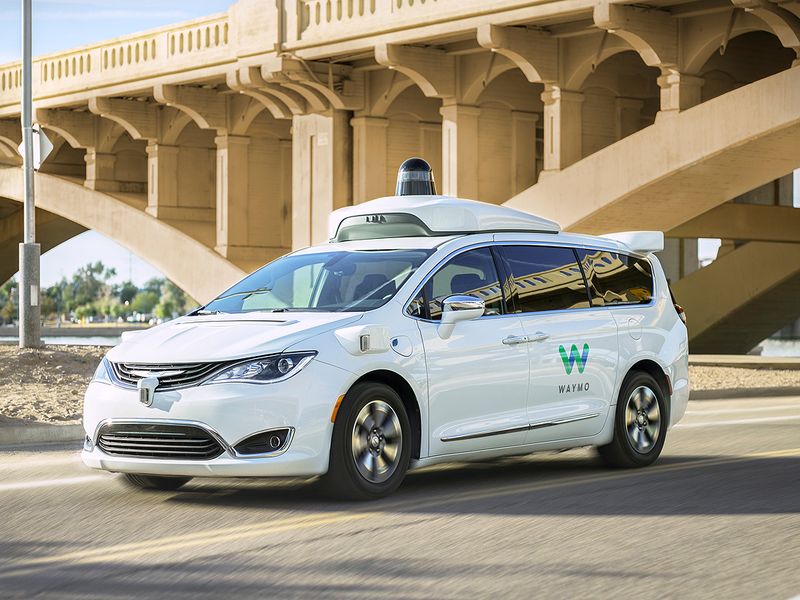
Executives and engineers pioneering self-driving technology have long believed autonomous vehicles hold the potential to dramatically reduce the number of traffic deaths and collisions.
Waymo has offered what might be a first glimpse into how those reductions occur.
The company, the commercial offspring of Google’s autonomous-vehicle project, issued a report Friday that contains a trove of safety-related insights distilled from 6.1 million miles of real-world driving data in its metro Phoenix test hub since the start of 2019.
The data includes information on 47 collisions — both actual and simulated — that Waymo identified from January 2019 through September 2020.
Waymo and other industry experts say the report is the first of its kind in terms of the breadth of detailed information provided, and it could set a benchmark for an industry in which federal regulators have otherwise merely asked companies to file voluntary safety reports.
“I think it’s huge,” said Daniel McGehee, director of the National Advanced Driving Simulator and associate professor at the University of Iowa. “It’s going to move the needle for the whole industry, and it’s something I’ve wanted for a long time — for companies to be bold and take a leadership role. With the amount of detail they’ve published, I think it will light a fire under other companies. They’re going to have to be transparent with their data.”
Among Waymo’s findings: None of the incidents were crashes involving road departures, hitting fixed objects or rollovers. Those three crash categories account for roughly 27 percent of U.S. road fatalities, according to federal figures.
Eliminating those types of collisions could be the first way in which self-driving technology leads to declines in fatalities and crashes.
Though NHTSA says human error accounts for 94 percent of motor-vehicle crashes — a figure that some safety advocates, incidentally, say can be misleading — autonomous technology will not curtail fatalities overnight.
That’s at least in part because automated vehicles and human motorists will share the road “for the foreseeable future,” Waymo says in its conclusions on its performance-data study, and “significant numbers of collisions due to human-driver errors that are simply unavoidable should be expected during this period.”
Separately, the company released a document that describes processes and methodologies that serve as the safety backbone of its operations. The pair of documents come at a time when Waymo has expanded the rollout of driverless rides through its Waymo One ride-hailing service.
The company provided more detail on the scope of those rider-only rides, in which human safety operators are no longer aboard. Waymo says it has driven 65,000 driverless miles in metro Phoenix, and that about 5 to 10 percent of its operations occur in rider-only services. The company operates 1,000 to 2,000 overall rides per week, so somewhere between 50 and 200 driverless rides a week. But that number is skewed by the fact Waymo paused operations during the pandemic in March. As rider-only operations commenced as part of Waymo One earlier this month, a spokesperson says it’s expected to quickly grow.
Another key aspect of Friday’s release: Waymo offers insight on its simulation practices.
One of the conundrums in real-world testing on public roads is that companies seek information on challenging scenarios, but human safety backups must commandeer control of the test vehicle should safety concerns arise — incidents known as “disengagements” or “interventions” in the industry.
Preventing a real collision is, of course, the priority. But a disengagement can limit the insights self-driving tech companies can learn from an unusual or hazardous situation. Waymo’s safety framework provides detail on how Waymo has simulated the way those scenarios would have played out.
As a result of these “counterfactual” analyses, Waymo says it could measure performance metrics, and examine 29 instances in which a “contact event” would have occurred had a human driver not intervened, in addition to the 18 instances in which contact actually did happen.
Waymo says none of the 47 cases would have been expected to lead to serious injury, and that nearly all incidents, including the eight most-serious actual and serious ones, involved rules violations or other errors committed by human road users.
“The counterfactual examination is super cool,” McGehee said. “This is something generally used in crash reconstruction, but you’re working with hindsight bias. This is very unique. There’s a lot of proprietary testing going on like this. But for them to publicize it, it really moves the needle on crash avoidance.”
Many of the “contact events” were minor, such as three that involved bicyclists and pedestrians walking into the right side of stopped Waymo minivans. Others were more serious. There were eight instances — three actual and five simulated — in which airbags deployed.
Many of the incidents are further described in the report, entitled “Waymo Public Safety Performance Data.” It warrants further scrutiny and analysis. Now that Waymo has issued the information, industry experts, safety advocates and other outsiders can accomplish exactly that.
And at a time when others are conducting driverless testing, such as Yandex in Ann Arbor, Mich., or plotting driverless deployments, such as Cruise in San Francisco, it bears watching whether competitors will follow suit in releasing similar documents.